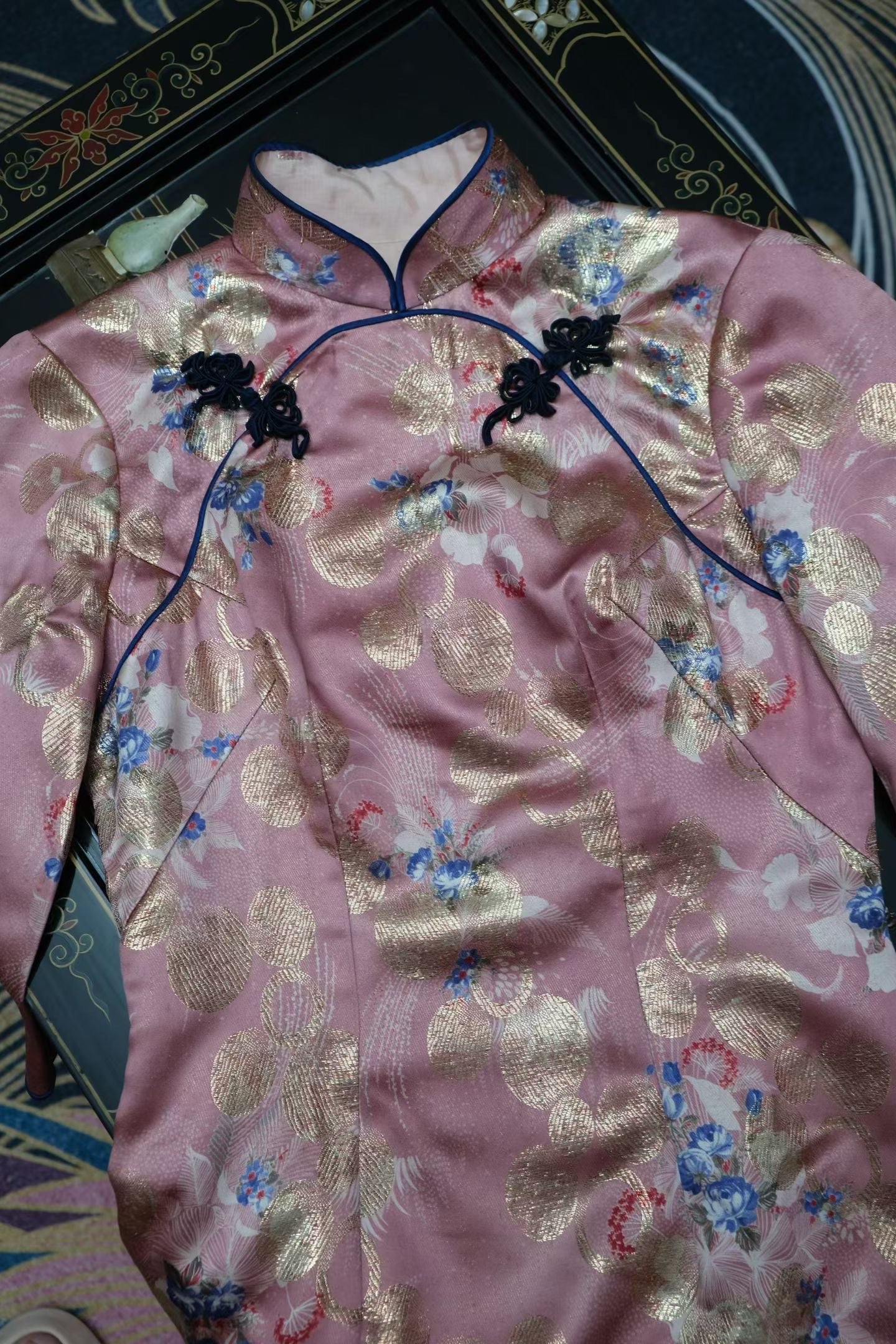深圳溯源
60年代 - 「金流星辰」:上世纪六十年代罕见双圆襟倒大袖嵌丝硬花扣意大利织金波点古董港式旗袍 / 1960s - "Golden Constellation": A Rare 1960s Hong Kong Vintage Qipao with Double Round Lapel, Inverted Wide Sleeves, Hard Floral Buttons, and Italian Lurex Polka Dots
60年代 - 「金流星辰」:上世纪六十年代罕见双圆襟倒大袖嵌丝硬花扣意大利织金波点古董港式旗袍 / 1960s - "Golden Constellation": A Rare 1960s Hong Kong Vintage Qipao with Double Round Lapel, Inverted Wide Sleeves, Hard Floral Buttons, and Italian Lurex Polka Dots
无法加载取货服务可用情况
分享一件非常罕见的上世纪六十年代双圆襟倒大袖嵌丝硬花扣意大利
旗袍主体以丁香色为底,散点分布的牡丹、梅花、兰草,兼工带写,
当西方六十年代流行“迷你裙与夸张首饰”时,
"Golden Constellation": Lurex Polka Dots, Inverted Sleeves, and the Elegant Orientalism of the Sixties
We are sharing a truly rare and exceptional 1960s vintage Qipao from Hong Kong, distinguished by its double round lapel, inverted wide sleeves, embedded wire hard floral buttons, and Italian lurex polka dot fabric.
The main body of the Qipao is set against a lilac base, upon which scattered patterns of peonies, plum blossoms, and orchids are rendered in a style that is both meticulous (gongbi) and freehand (xieyi). Lurex gold polka dots are interspersed among the florals, creating a visual rhythm between the pink ground and the gold motif, reminiscent of the classical Chinese text Kaogong Ji which describes "ornaments like the stars and constellations." This design successfully preserves Oriental luxury while echoing the polka dot fashion language of the Western sixties.
The main opening features a double round lapel (or shuang yuan jin) design, outlined with deep blue silk piping. This detail not only flatters the neckline's contours but also subtly references the traditional Chinese colour philosophy of "blue comes from the indigo plant, but is more beautiful than the plant itself" (qing chu yu lan).
Most notably, this 1960s Qipao was crafted using the most modern Italian haute couture lurex fabric of the time. Not only is the surface covered in gold jacquard polka dots, but the entire ground fabric is also woven with fine gold threads. In the shifting light, the lilac ground shines like a rosy morning mist, and the gold patterns flicker like fireflies. The deep blue piping serves not only as a striking colour contrast but also subtly incorporates the cosmological colour view from the I Ching (Zhou Yi): "Blue is the colour of the East, symbolizing growth and vitality."
While the Western sixties were dominated by mini-skirts and exaggerated accessories, this Qipao, with its reserved patterns, exquisite craftsmanship, and deep Eastern philosophy, stands as the finest embodiment of "Elegant Orientalism." It is more than a garment; it is a walking exhibition of Chinese art and philosophy in motion.
分享












